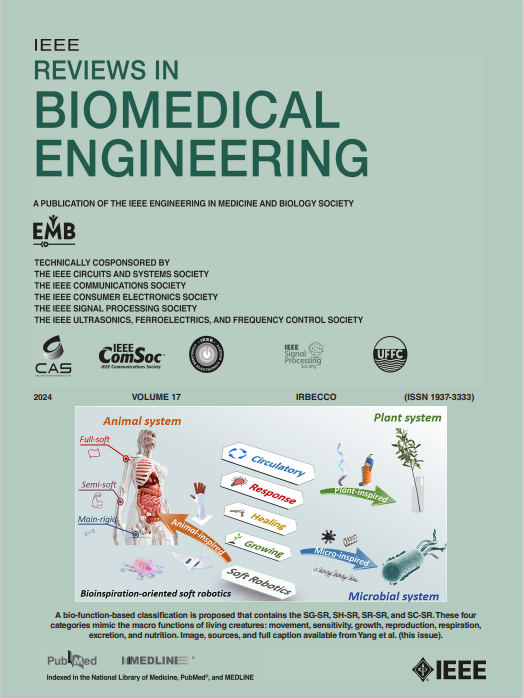新兴的手势识别可穿戴界面和算法综述
IF 17.2
1区 工程技术
Q1 ENGINEERING, BIOMEDICAL
引用次数: 56
摘要
手在广泛的基本日常活动中至关重要,阻碍手功能的神经系统疾病会严重影响生活质量。可穿戴手势界面有望恢复和辅助手部功能,增强人机交流。这篇综述的目的是综合当前用于手势识别的新型传感接口和算法,应用范围包括康复、假体控制、用于增强的外骨骼、手语识别、人机交互和用户身份验证。结果表明,电气、机械、声学/振动和光学传感是手势识别界面中的主要输入模式。确定了两类算法:1)预定义的固定手姿势的分类算法和2)连续手指和手腕关节角度的回归算法。传统的机器学习算法,包括线性判别分析、支持向量机、随机森林和非负矩阵因子分解,已被广泛用于各种手势识别应用,最近,深度学习算法被应用于进一步促进传感器信号和多关节手姿势之间的复杂关系。未来的研究应侧重于通过更大的手势数据集提高识别精度,提高实验室外日常使用的可靠性和稳健性,并开发更柔软、不那么突兀的界面。本文章由计算机程序翻译,如有差异,请以英文原文为准。
Emerging Wearable Interfaces and Algorithms for Hand Gesture Recognition: A Survey
Hands are vital in a wide range of fundamental daily activities, and neurological diseases that impede hand function can significantly affect quality of life. Wearable hand gesture interfaces hold promise to restore and assist hand function and to enhance human-human and human-computer communication. The purpose of this review is to synthesize current novel sensing interfaces and algorithms for hand gesture recognition, and the scope of applications covers rehabilitation, prosthesis control, exoskeletons for augmentation, sign language recognition, human-computer interaction, and user authentication. Results showed that electrical, mechanical, acoustical/vibratory, and optical sensing were the primary input modalities in gesture recognition interfaces. Two categories of algorithms were identified: 1) classification algorithms for predefined, fixed hand poses and 2) regression algorithms for continuous finger and wrist joint angles. Conventional machine learning algorithms, including linear discriminant analysis, support vector machines, random forests, and non-negative matrix factorization, have been widely used for a variety of gesture recognition applications, and deep learning algorithms have more recently been applied to further facilitate the complex relationship between sensor signals and multi-articulated hand postures. Future research should focus on increasing recognition accuracy with larger hand gesture datasets, improving reliability and robustness for daily use outside of the laboratory, and developing softer, less obtrusive interfaces.
求助全文
通过发布文献求助,成功后即可免费获取论文全文。
去求助
来源期刊

IEEE Reviews in Biomedical Engineering
Engineering-Biomedical Engineering
CiteScore
31.70
自引率
0.60%
发文量
93
期刊介绍:
IEEE Reviews in Biomedical Engineering (RBME) serves as a platform to review the state-of-the-art and trends in the interdisciplinary field of biomedical engineering, which encompasses engineering, life sciences, and medicine. The journal aims to consolidate research and reviews for members of all IEEE societies interested in biomedical engineering. Recognizing the demand for comprehensive reviews among authors of various IEEE journals, RBME addresses this need by receiving, reviewing, and publishing scholarly works under one umbrella. It covers a broad spectrum, from historical to modern developments in biomedical engineering and the integration of technologies from various IEEE societies into the life sciences and medicine.
 求助内容:
求助内容: 应助结果提醒方式:
应助结果提醒方式:


